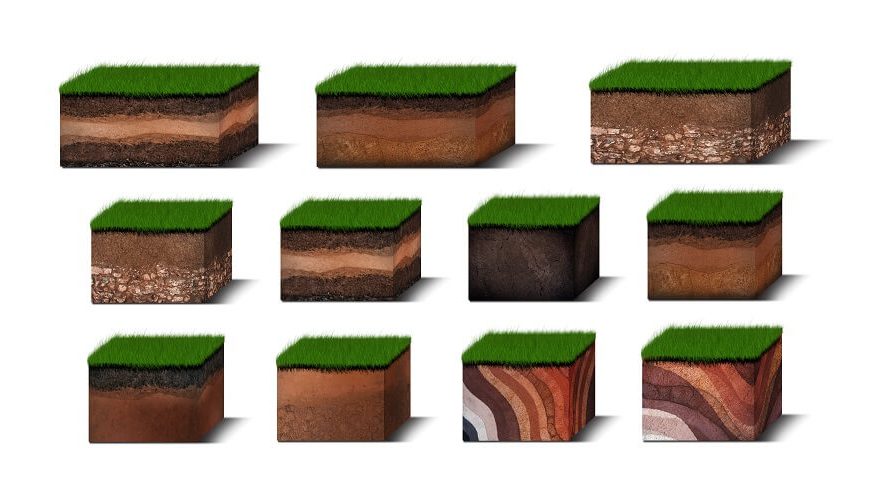Fun Ways to Teach Young Children about Soil
Teaching little children about soil is easy especially since they are naturally curious and this subject can be taught easily with many hands-on activities. It is important that children learn about soil, the importance of soil, the various layers of soil and the functions of each and so on. It will eventually help them understand how nature works and really appreciate how wonderful it is.
As adults, let us take a look at our potted plants. When we or our gardener gets a new pot ready for plants we don’t just put mud in directly, there are different layers that have to be added first before finally filling the pot with fertile soil. The texture and functions of each layer is different and each has its own unique role to play. The same can be seen when we dig deep into the soil, the colour and texture of the soil changes. The earth’s surface is covered with soil and below the top surface there are different layers that contain rock, sand, clay, silt, air, water, organic materials, minerals and so much more.
Did you know that soil is not sterile, it actually contains thousands or more living organisms in it. 95% of all human food depends directly or indirectly on the earth’s soil to grow and flourish.
Let us now understand what soil is and its importance.
Soil is the uppermost layer of the earth’s surface. It is made up of a mixture of water, air, minerals and also organic matter like leaves, twigs, roots, insects and bugs. All of these are essential to support plant life, animal life and even the life of microorganisms.
Soil is important because it supports the life on Earth in numerous ways-
- Soil absorbs, holds, releases and even purifies most of the terrestrial water.
- Plants and crops need soil to grow. Soil provides them with vital nutrients.
- Soil and plants help keep the surrounding air clean by absorbing dust, and various gases that are harmful to humans.
- The soil is home to many ground dwelling animals and insects
- It is an essential component of many micro and macro ecosystems, and is a vital part of the food chain.
- It provides the foundation for roads, houses, and buildings.
Layers of soil, their composition and function.
Contrary to popular belief soil comprises so much more than just the top layer, in fact soil consists of 6 distinct layers which are also known as horizons. Let’s keep referring to the diagram above as we go through each horizon or layer of soil.
- O horizon – This is the uppermost layer of soil that covers the ground surface. It mainly comprises organic matter like dried and decomposing leaves and bugs. This organic matter is also referred to as humus. The thickness of the O horizon varies from being thick in forested areas to thin and even non-existent as seen in the cities.
- A Horizon – This is also known as the topsoil or surface soil and is made up of minerals and decomposed organic material. The colour of the soils is dark and is ideal for seeds to germinate and plants to grow.
- E Horizon – also called the eluviated layer is composed of mostly sand, silt and at times particles of quartz. The minerals, clay and organic matter have leached down and out of this layer making it lighter in colour and less fertile.
- B Horizon – this is the subsoil layer which lies just below the surface soil layer. Mostly clay and mineral deposits form this layer. Compared to the A and O horizons, the B horizon has very little organic matter.
- C Horizon – also known as the parent material layer or the substratum layer has very little organic matter in it and mainly contains broken-up pieces of bedrock from the next layer. It is known as the parent material layer because eventually soil will form from this layer. Plant roots do not grow in this layer.
- R Horizon – This last layer and final layer of soil is also known as the bedrock layer. It is made up of huge areas of solid rock like sandstone, limestone and even granite.
To make it easier to learn about and remember the various layers of the soil, the following games activities for children can be done –
- Worksheets –
Worksheets like the example shown above can be given to the children to solve. Or you can be creative, use the given image as a reference and make your own worksheets for your child. Here are a few suggestion on the types of worksheets that can be made-
- Name the different layers of soil
- Match the correct layer name to the diagram.
- Give them blank soil layers and let your child draw and colour in the different soil layers.
- Make it an art and craft activity and let your child stick some stones, clay, sand , a mixture of used tea leaves and coffee grounds, dried leaves and twigs etc. to represent the different layers of soil
- Hopscotch –
- Potting plants-
- Yummy edible soil –
Draw the regular hopscotch pattern on the floor making sure it has 6 levels. Instead of numbers each, make each layer represent a different soil layer, you can either label the layers or draw them with different coloured chalks. The blocks can be single blocks for your child to jump on with one leg, or double blocks for them to use both legs, if they are still not confident using 1 leg to hop. You can also make alternating single and double blocks, which makes it challenging and interesting for the children to use single as well as both legs to hop from one level to the next. They can call out each soil level as they move from one to the next and back again.
Get your little one involved as you or your garden transfer small plants into pots. Encourage and help your child to identify each soil layer as it is being added into the pot.
Children will love learning about the different layers of soils as they scoop spoonful of this edible soil in their mouths.
- You will need –
- Some chocos, choco duets, or choco laddoos cereal
- Assorted Chocolate chips, butterscotch chips or granola (remove any big clusters that may be there)
- Crushed Oreo biscuits
- Few crushed Marie or digestive biscuits.
- Gummy worms or sour sticks cut into small strips to look like worms
- Small chocolate cake
- Chocolate sauce.
- Desiccated coconut mixed with green food colouring.
- A pinch of coloured sprinkles.
- Clear tall plastic glasses or clear cups, it should have a good height so that all the layers can be accommodated.
- Spoons
- Sticky notes or post-its.
- A marker pens 2 colours
- Method –
- Take the transparent cup and first fill it with the chocos of your choice, this will be the bedrock or R horizon layer.
- Next you can put chocolate chips or butterscotch chips or granola, this will be the C Horizon or the parent material layer.
- For the Subsoil or B horizon layer, crumble the piece of chocolate cake, mix it with some chocolate sauce and put it in the cup.
- The eluviated or E horizon layers can be made by adding the crushed Marie or Digestive biscuits.
- The A horizon or topsoil is the darkest layer and can be made with crushed and crumbled Oreo biscuits, some gummy worms or a few strands of sour sticks can be added in this layer as well.
- Finally the surface soil or O horizon is made with the green desiccated coconut and a few sprinkles.
- Cover one side of the transparent glass/ cup with the sticky note and mark the layers with one coloured marker pen and then using the other colour pen you can write the names of the layers or get the children to do it if possible.
- They can enjoy eating the “soil” once the activity is done
At EuroKids, the teachers know that children learn best and remember better when they participate in hands-on activities. Therefore they try, plan and include as many such activities as possible in their curriculum. Click here (insert link) to find and visit one of our centres closest to you and who knows maybe you’ll be lucky to see children participating in one of the many hands-on activities done throughout the year.















